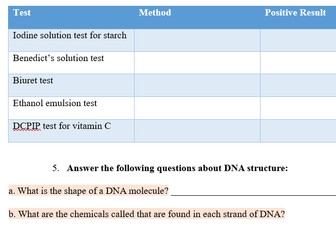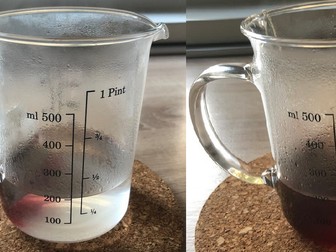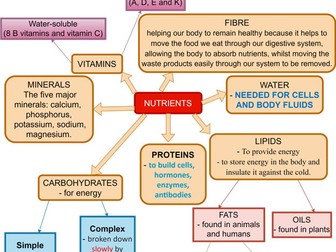Experiment: Atmospheric Pressure GCSE
<p>Are you looking for an engaging way to teach your students about atmospheric pressure? Look no further! This Atmospheric Pressure Experiment Worksheet is designed to captivate your students while enhancing their understanding of scientific concepts.<br />
Learning Objectives:<br />
Understand the concept of atmospheric pressure.<br />
Experiment with creating a seal between two plastic hemispheres.<br />
Develop prediction and analysis skills through hands-on inquiry.</p>
<p>What’s Included:<br />
Step-by-Step Experiment Instructions: Clear and concise guidance for students to explore the principles of atmospheric pressure using common materials.<br />
Reflection Questions: Thought-provoking questions that encourage critical thinking and reinforce learning.<br />
Answer Key: Detailed answers to help you assess student understanding.<br />
Scoring Rubric: A handy rubric for easy grading and feedback.</p>
<p>Materials Needed:<br />
Two plastic hemispheres<br />
Rubber seal<br />
Syringe<br />
Two tubes<br />
One-way valve<br />
Two metal rings</p>
<p>Why This Experiment?<br />
This experiment is perfect for students at the IGCSE and GCSE levels, aligning with Cambridge science standards. It encourages collaboration, critical thinking, and a hands-on approach to learning. Plus, it’s a fantastic way to spark curiosity in your classroom!</p>
<p>How to Use:<br />
Set Up the Experiment: Students will follow the provided instructions to create a vacuum between the hemispheres.<br />
Make Predictions: Encourage students to predict whether they can separate the hemispheres after removing air.<br />
Analyze Results: Students will reflect on their predictions, explore the concepts of pressure, and discuss their findings.</p>
<p>Transform Your Classroom:<br />
Invest in your students’ learning and make science fun! This atmospheric pressure experiment worksheet is ready to inspire curiosity and foster a deeper understanding of scientific principles.</p>
<p>Download Your Copy Today!<br />
Don’t miss out on this engaging resource! Click the link to purchase the Atmospheric Pressure Experiment Worksheet and bring science to life in your classroom. Your students will love it!</p>


